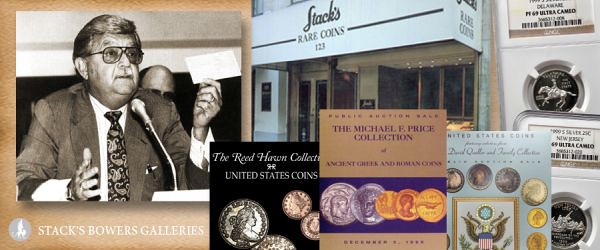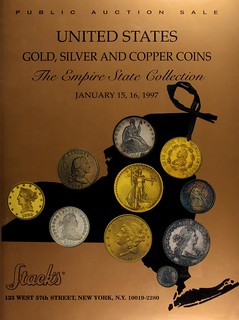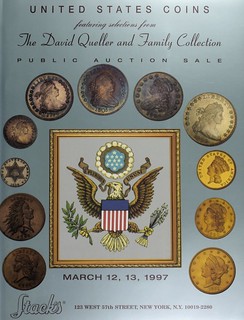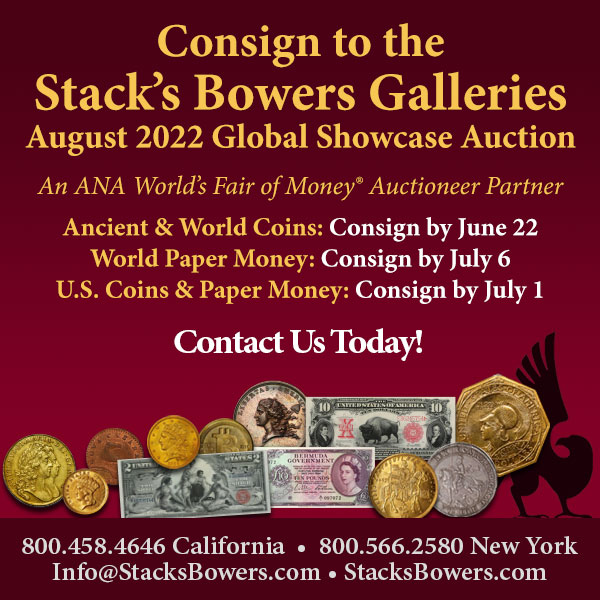
PREV ARTICLE
NEXT ARTICLE
FULL ISSUE
PREV FULL ISSUE
V25 2022 INDEX E-SYLUM ARCHIVE HARVEY STACK'S NUMISMATIC FAMILY, PART 123Stack's Bowers has a backlog of the late Harvey Stack's numismatic memoir articles and will continue publishing them. In this one Harvey discusses a late 1990s transitional point in numismatics, when grading services became mainstream and collectors adapted (or didn't) to the new world of slabs, all while old-time collections were coming to market. -Editor While Harvey Stack passed away in January of this year, we are pleased to continue to offer readers the articles he had already written, so that they can be read and enjoyed as he would have wished.? In the last quarter of 1996 and going into 1997 numismatics showed signs of new interest and regrowth. As grading and authenticating services became more prominent, buyers had more confidence in their purchases, and a lot of unscrupulous sellers were taken out of the market. Of course not everyone liked slabs as it made some of the traditional ways of collecting – using paper envelopes or coin albums – very hard to continue. If you had a collection you were building in an album or large lucite holder, these collecting methods made it very clear what items you were still looking for and what was needed. The grading companies tried various sizes of holders and different ways of labeling them, but the fact that coins were increasingly slabbed meant that people had to choose between security and sticking with their "old ways." For many the assurance of having authenticated and graded coins was worth it. Others were emotionally attached to the way they had dealt with coins in the past. They liked holding them by their edges, feeling the weight and size of each item, examining them close up for blemishes, light bag marks and striking quality. They could have the coin in their hands and try to imagine its history and who owned it before. We always felt that whatever pleased each individual collector was what they should do. In general, collectors were coming back to the field. We witnessed greater traffic in our shop to view and purchase our inventory, better attendance, and greater numbers of mail bids at our auctions. We also saw a great increase in the number of people taking part in national and local shows around the country, and an increase in memberships at local coin club meetings. Even the size of coin publications grew with more stories and advertisers. It is also interesting to note that even as late as 1997 people were still examining their daily change to see if they could find any silver coins issued in the United States before 1965 as the value of silver had risen so much that a tidy profit for the finder was possible. Scarce and rare dates began to rise again in the marketplace, as auction sales had greater participation and contributed to stronger prices. A number of old time collectors felt the market was stronger than it had been during the few preceding years and decided to consign their items to a Stack's public auction. In 1997 we had enough collections to conduct ten separate sale which offered various rarities and quality collections formed by some well known numismatists, some of whom we had served for decades. In many cases new records were established.
David decided to start a collection, but only wanted Mint State or Proof coins, the best he could get. In the same year, 1954, David visited Stack's again and decided at that one sitting to buy sets of two-cent pieces, three-cent pieces (silver and nickel), Shield and Liberty nickels, 20-cent pieces, Peace dollars, and silver and gold commemoratives. He also bought some individual coins to fill in the family's collections they had built from change. In this way David immediately became a valued collector. He took pride in acquiring a basic collection as a great starter. In later years later he could be seen at various coin shows and conventions around the country, and he was often found at Stack's to see what was new. Our January and March 1997 sales were a strong way to begin our year, but there was much more to come in 1997, as I will tell in my next article.
To read the complete article, see:
To read the earlier E-Sylum article, see:
Wayne Homren, Editor The Numismatic Bibliomania Society is a non-profit organization promoting numismatic literature. See our web site at coinbooks.org. To submit items for publication in The E-Sylum, write to the Editor at this address: whomren@gmail.com To subscribe go to: https://my.binhost.com/lists/listinfo/esylum All Rights Reserved. NBS Home Page Contact the NBS webmaster 
|



